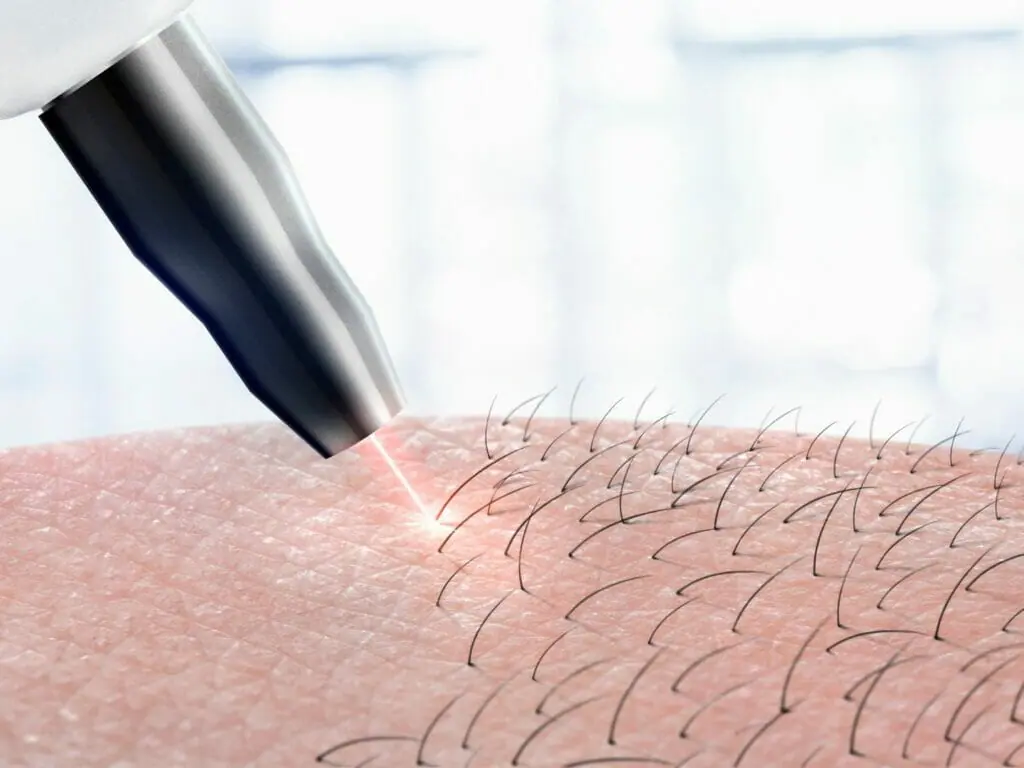Embracing your true self is a fabulous journey, and for the transgender community, laser hair removal plays a pivotal role in this transformation. It’s not just about altering appearances to be more aligned with your masculine or feminine essence; it’s a powerful step towards emotional freedom and self-expression.
As you embark on this journey, perhaps inspired by characters in transgender TV shows or narratives from the best transgender fiction stories, laser hair removal stands as a beacon of change. It’s a process that transcends mere aesthetics, echoing the deep personal transitions explored in books about gender identity.
For those stepping into the world of laser hair removal for the first time, this article is your go-to guide. We’ll dive into the technology, infused with insights as enlightening as the stories you’ve read or the connections you’ve made through trans dating apps.
From skin prep to aftercare, we’ll cover everything you need to ensure your laser hair removal experience is as successful and affirming as the journey you are on. So, let’s make this experience as empowering and transformative as the path you’re walking on!
How Do Transgender People Get Rid of Hair?
As a transgender person, you may experience unwanted hair growth that makes you feel uncomfortable or unattractive. Unwanted hair can be found in many places on the body, including the face, chest, and arms. Fortunately, there are several ways to get rid of this hair permanently.
Shaving is the most popular method for temporarily removing facial and body hair. While it’s a fast and easy way to get rid of unwanted hair, it can lead to irritation and other skin issues. It doesn’t provide permanent results either, as the hair will grow back in a few days or weeks.
Waxing is also commonly used to remove unwanted body hair. Waxing involves applying hot wax to the skin, allowing it to cool and harden before being pulled off. This pulls out the hair from the root, providing temporary results that can last up to several weeks. However, waxing can be painful and cause skin irritation.
Lastly, we have laser hair removal, which is the most effective way for transgender people to get rid of unwanted facial or body hair. The procedure works by using lasers to target and damage the melanin in individual hairs, causing them to fall out over time. It’s a safe, non-invasive option that can permanently reduce hair growth with minimal discomfort.

Why Is Laser Hair Removal Ideal for Transitioning?
Laser hair removal for transgender is a process where a laser emits light that targets the melanin in the hair follicle, destroying it and preventing re-growth. The procedure can be used on both small and large areas of the body, such as the face, chest, and arms.
It’s considered to be the most effective method for permanently removing hair, and it can also be used to reduce the amount of hair that grows back. This is important for transgender individuals, as it can help them achieve a more feminine look.
How Laser Hair Removal Works
Laser hair removal for transgender works by using specialized light beams to target and destroy the hair follicles. The laser light is absorbed by the Melanin, or pigment in the hair follicle. This causes damage to the targeted area and prevents the further growth of unwanted hair.
Depending on the type of treatment used, it can take several sessions for the laser to fully destroy the hair follicles and reduce hair growth. Typically, multiple treatments are needed to achieve desired results. After each treatment, patients will experience a decrease in the amount of unwanted hair, and eventually, permanent results can be achieved.
The success of laser hair removal usually depends on several factors such as skin type, the area being treated, and the skill of the technician. Different skin types absorb laser light differently, so those with darker complexions may need more treatments than those with lighter skin tones.
The area being treated can also affect the results, as larger areas tend to require a higher number of treatments for success. Finally, an experienced technician working at a reputable hair removal clinic is key to obtaining good results from laser hair removal. A technician should be experienced and knowledgeable about laser hair removal to ensure the best results.

Managing Pain During the Procedure
Prior to the laser hair removal procedure, it is important to talk with your dermatologist about how best to manage any pain you may experience during the treatment. Your healthcare provider can provide medication or other treatments that may help reduce the amount of discomfort you feel.
In addition to talking with your healthcare provider before undergoing laser hair removal, there are several other ways you can help manage the pain:
- Take an over-the-counter pain reliever such as ibuprofen or acetaminophen an hour before your appointment. Consult your technician first.
- Ask your healthcare provider if they offer any cooling devices or gel packs to help numb the area and reduce discomfort.
- Wear loose-fitting clothing that will not irritate the skin when it is exposed to the laser.
- Drink plenty of water before and after the procedure to help keep the skin hydrated and reduce discomfort.
- Ask your healthcare provider if they offer any other methods of pain management, such as laser epilation or a topical anesthetic.
What Result Can Be Expected?
Laser hair removal can provide transgender individuals with a permanent solution to body hair growth, reducing the need for daily grooming and providing lasting smoothness. Depending on the skin tone, laser type used, and the number of treatments needed, results may vary.
On average, most individuals need 4-6 sessions at intervals of 6-8 weeks, although some may need additional treatments. For optimal results, it is important to follow the instructions of the laser technician and avoid waxing or plucking in between sessions.
Is laser hair removal permanent MTF?
While laser hair removal cannot completely stop all hair growth, it can reduce the amount of hair significantly. This can lead to a permanent reduction in body hair, though some people may require multiple treatments to achieve the desired results.
Additionally, certain areas such as the face and neck may be more difficult to fully remove all hair growth due to higher concentrations of thicker hairs in these regions. In order to permanently reduce unwanted hair with laser hair removal, it is important to follow the treatment guidelines and be sure to select a qualified provider.
Why Include Laser Hair Removal in Your Transition
Laser hair removal is an increasingly popular transition option for those looking to achieve a more feminine look. Not only does it provide permanent hair reduction, but it also reduces the amount of time and effort spent on regular waxing or shaving as well as helps to reduce skin irritation. It can also help boost one’s confidence by providing a smooth look to the skin.



